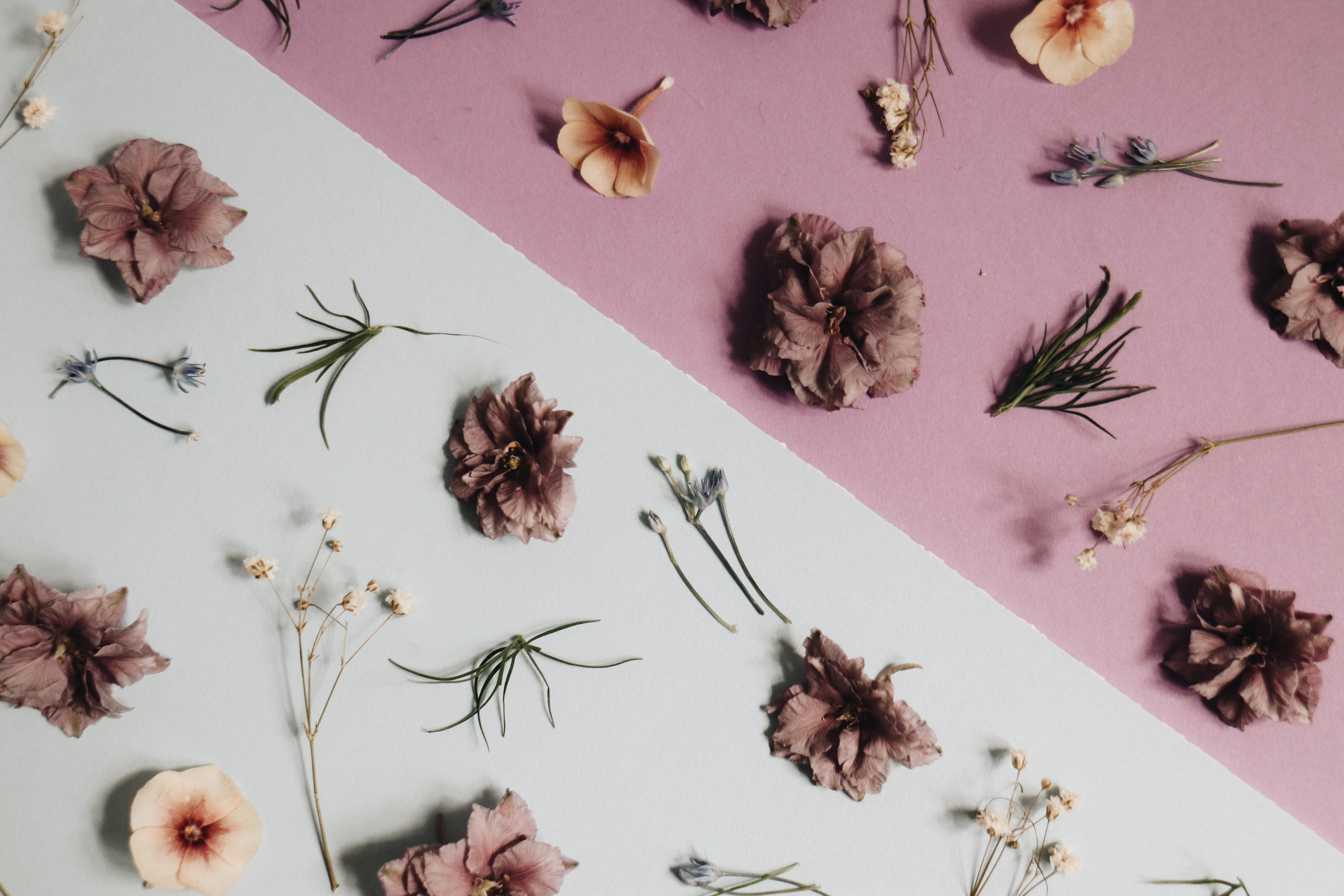“In no other system of the body is the connection between the physical and the psychological aspects of our humanity as apparent as in the nervous system. […] One wonders why the physical side of being was ever regarded as separate from the psychological.” — David Hoffman
Herbalism, the study and use of plants for healing, invites a holistic approach to health and encourages a mindful, patient, and deep relationship with one’s body and well-being. More so, herbalism encompasses the well-being and health of the land, nature, flora and fauna, as well as that of other human beings.
As part of a larger radical home economics1 praxis, the herbalism I cultivate is part of an effort to resist capitalism, including the ever expanding and extractive natural health industries. David Hoffman reminds us of the key role that intersecting and structural oppressions have on suffering and thus, on how we understand supporting mental health:
Many ‘neuroses’ met in today’s western society are quite possibly normal responses to an absurdly abnormal environment, sane reactions of the psyche and emotions to the insanities of a diseased society. In this sense, there is a limit to the healing of an individual, when the disease is really a reflection of society’s disease. […] For us to be whole, our society must be whole. For our society to be whole, we must be whole. (154)2
Across the world, historically and contemporarily, there are numerous and different approaches to plant-based healing. Folk herbalism, also called popular herbalism, is understood to be a part of larger “Western Herbalism,” whose legacy stems from Europe and was brought to North America with settlers. However, using the term Western Herbalism, as herbalist Hunter Cubitt-Cooke, taught in their workshop, obscures the traditions of Indigenous Peoples practiced prior to and concurrently in the same geographical regions.
Folk herbalism, or kitchen herbalism, as I understand it, has a main goal keeping herbal knowledge in the hands of “the people” and from being owned by corporations and/or institutional gatekeepers. Plant-based healing is understood by many herbalists as an ancestral right shared by all people. The kind of herbalism I practice prioritizes accessibility, especially since many of its remedies come from poor and rural communities, and does not require “expertise” to be practiced.
That said, for settlers, it is important to recognize that not all plant-healing knowledge is “up for the taking.” Certain knowledge requires cultural membership, initiation, or dedicated study. It is imperative for settlers to reflect on what it means to have access to plant-based healing on stolen and/or occupied land in the context of extractive capitalism. We must practice anti-colonial and responsible herbalism. Many BIPOC communities, groups, and healers around the world have spoken to and are speaking to cultural appropriation, restricted symbols, and the endangering of and dispossession of plants and lands with whom they share a longstanding ancestral and spiritual relationship. These voices are better suited to guide you in decolonizing your practice than mine and I encourage you to make the space for them. As well, there is a non-profit organization, called United Plant Savers, that tracks endangered and at-risk species and works with wild medicine keepers around the world3.
Kitchen/Folk Herbalism Primer
Plants are complex. They usually have more than one action on our bodies at a time. Thus, like herbalism encourages a holistic understanding of health, it also asks that we get to know plants as a whole and as unique beings. For example, different herbs have different levels of toxicity and some are not meant for internal and/or prolonged uninterrupted use. Get to know their Latin names to make sure that you are working with the right plant. Know which parts of herbs are safe to use. Seeds, leaves, stems, flowers, fruit – not all of these parts are safe to use or meant to be used. A good example is to think of rhubarb – whose stalks are tart and delicious but whose leaves are poisonous.
Hoffman reminds us that to best choose our plant remedy, a proper diagnosis is a necessary first step. Herbal remedies interact with allopathic4 medicines and certain pre-existing physiological conditions can cause certain herbs to be less helpful and, potentially, harmful. As a rule of thumb, you don’t want to take an herbal medicine that has the same action as an allopathic medication: for example, taking an herb with a blood thinning action while also taking a blood thinning drug. Last but not least, bodies react to medicines in different ways. Listen to your body and start with small doses when using new plants.
Nourish & Strengthen Your Nervous System
According to David Hoffman, “perhaps the most important contribution herbal medicine can make in the whole area of stress and anxiety is in strengthening and ‘feeding’ the nervous system” (75). One key groups of herbs, “invaluable” as Hoffman refers to them, to become familiar with are the nervine tonics, “which strengthen and restore the tissues directly” (75). Nervine tonics are a subcategory of larger nervines, which refers to plants that have beneficial action on the nervous system. There are four categories of nervines: including nervine tonics, nervine sedatives/relaxants, nervine demulcents5, and nervine stimulants. Tonics refer to herbs that are “nurturing and enlivening. Herbs that help strengthen and tone either a specific organ or the whole body.” Some of the top nervine tonics include Oats, Vervain, St-John’s Wort, Skullcap, and Damiana.
Nervine tonics are usually high in calcium, magnesium, B vitamins, and protein. These nourish your nervous system. Consider adding foods like spirulina, bee pollen, and nutritional yeast to your foods to further strengthen your nervous system. Indeed, Rosemary Gladstar specifically recommends adding calcium to your diet when dealing with anxiety, stress, and debilitation. Calcium plays a crucial role in healthy nerve functioning. It helps to “prevent nervousness, irritability, muscle spasms, muscle cramping, hyperactivity, and insomnia.” Other herbal sources of calcium include amaranth, chickweed, dandelion greens, horsetail, mustard greens, nettle, oats and watercress, and seaweed.
On the other hand, it is important to cut back on stressor foods. Foods that stimulate the over stimulated body including coffee, chocolate, sugars and sweets, and alcohol3 (Gladstar). Consider herbal energy tonics instead.
One of the most important factors for addressing stress and anxiety is getting rest – which also happens to be quite troubled and deregulated by trauma and stress. Luckily, there are many herbal helpers for deep sleep. One of the best categories of herbal helpers for sleep troubles is nervine relaxants which include a sub-category called hypnotics. These are herbal remedies that range in sedative action and will help to induce a deep and healing state of sleep. These include herbs like Valerian, Hops, California Poppy, Chamomile, Passionflower, etc. As part of a holistic approach, sleep is best helped when combined with attention to relaxation techniques, nutrition, and lifestyle changes.
Support Your Adrenals & Build Deep Immunity: Fight or Flight Deregulation
Another important category of herbs used for chronic stress, fatigue, and mental health are adaptogens, which are a relatively new concept to Western herbalists and medicine, but have been used in other parts of the world for a very long time. Adaptogens help improve the body’s adaptability: “In other words, adaptogens enables the body to avoid reaching the point of collapse or over-stress because it can adapt around the problem” (Hoffman, 21). These plants are “excellent for supporting proper immune function, building deep immunity and nourishing the endocrine and immune system6.” (Wood Nickerson, 72). As well, many of them have beneficial actions for promoting deep sleep and addressing insomnia. Brittany Wood Nickerson recommends using adaptogens and the winter season to focus on build deep immunity. Both she and Rosemary Gladstar7 use adaptogens in soups and chai recipes. Examples: Holy Basil, Siberian Ginseng, Reishi Mushroom, Codonopsis, Ginseng, Rhodolia Root, Ashwaganda, Licorice Root, Astragalus, Schisandra Berries, and Chickpeas.
Digestion: “The Gut-Brain Axis”
Digestion and mental health are very closely interconnected. I would offer that they are interwoven. Indeed, many herbalists call the gut the “second brain.” Trauma, also, seems to have a very direct relationship with our guts. Our digestive health requires that we tend to our nervous system and vice versa. Herbs are particularly well suited to helping us with our digestion – both in dealing with symptoms when they present and in preventing and addressing chronic issues. They are also delivered right at the source: Food is medicine, after all. Bitters8, carminatives9, and nervines are some of the top herbal helpers along with anti-inflammatories, demulcents and astringents. Luckily, many herbs are combinations of these. According to Hoffman, herbalists tend to favour bitter carminatives and nervine carminatives for helping digestion. Many herbal helpers for digestion seem to work at its very intersection with the nervous system.
Furthermore, the bacteria in our gut flora play an important role in our mental health. Touching and being in contact with living soils and healthy microorganisms play a vital role in our health. We can also increase the health of our biome/flora by eating more (small amounts, often) live fermented foods. As well, by rethinking our “antiseptic tendencies” and fear of bacteria, we can begin to reduce the use and thus, production, of harmful chemicals, which inevitably make their way into waterways and the environment, affecting certain bodies in disproportionate ways.
Create Your Own Herbal Rituals: Make Space For Healing
The act of preparing and drinking a cup of herbal tea can be a powerful healing ritual in and of itself. One of my favourite herbal tools for rituals are herbal baths. These are often overlooked but play a central and powerful role in herbal healing. In fact, some herbalists administer most – and, some, all – of their remedies this way. Our skin is a major site of absorption and one of our main organs of elimination (helping us let go of what we need to). It is sometimes even referred to as a third kidney. On one of the worst days I can remember, I poured chamomile into the tub and an infused sunflower oil, and slipped beneath the water anointing myself with tender flower power. Combine herbs with salt, Epsom salts (magnesium), and a nourishing herbal oil to create personalized healing soaks. If you don’t have a bath (or have one you don’t feel comfortable bathing in) consider foot and/or hand baths as these limbs are primary sites of absorption. Learn to use herbal care products to reorient caring touch self-wards. Nourishing, grooming, and caring for one’s skin, nails, and hair is not vain: it is a defiant act of care. Doing so, can have a profound impact on mending and strengthening our relationship with our bodies.
As a relationship practice, herbalism invites us to connect with and nurture plants and non-human beings, our communities and those of others, and, of course, our (whole) selves.
Note: The information in this article is not meant to replace medical advice or treatment.
- Term borrowed from Kelly Coyne and Erik Knutzen
- Hoffman, David. The Herbal Handbook: A User’s Guide to Medical Herbalism. Healing Arts Press, 1998.
- United Plant Savers. Species At-Risk List. 2018, https://unitedplantsavers.org/species-at-risk-list/.
- Allopathic refers here to modern conventional medicine which often targets symptoms, is non-holistic, and relies heavily on pharmaceuticals. Non-allopathic medicine tends to focus more on preventative measures, addressing underlying causes, and nonemergency situations.
- Demulcents: “These herbs are soothing and healing to irritated and inflamed tissues.” (Gladstar, 49) They possess a mucilaginous property that coats tissues.
- Wood Nickerson, Brittany. The Herbal Homestead Journal. Off The Common Books, 2015.
- Gladstar, Rosemary. Rosemary Gladstar’s Herbal Recipes for Vibrant Health: 175 Teas, Tonics, Oils, Salves, Tinctures, and Other Natural Remedies for the Entire Family. Edited by Nancy W. Ringer, Storey Publishing, 2008.
- Bitters: stimulate appetite, stimulate release of digestive juices, aid the liver in detoxification work and increase the flow of bile, help regulate secretion of pancreatic hormones, and help the gut wall to repair damage.
- Carminatives: Ease discomfort caused by flatulence. Plants rich in aromatic volatile oils that stimulate the digestive system to work properly and with ease, soothing the gut wall, reducing any inflammation, easing griping pains and helping the removal of gas from the digestive tract.












Show Comments (0)